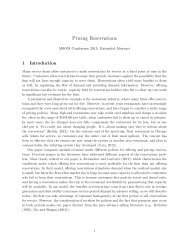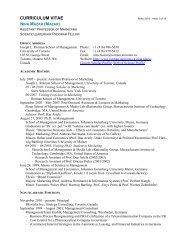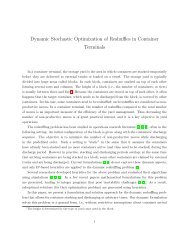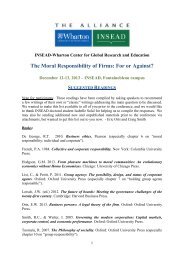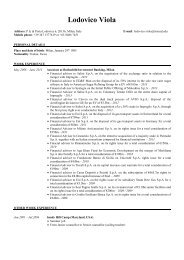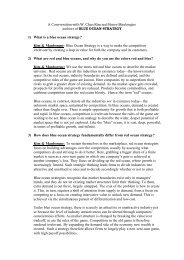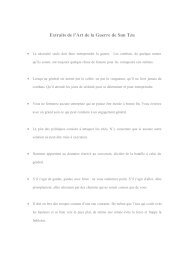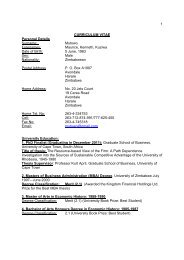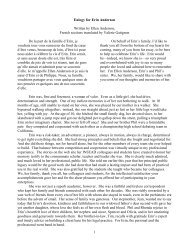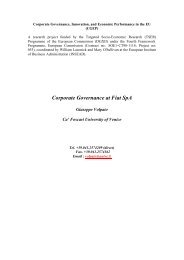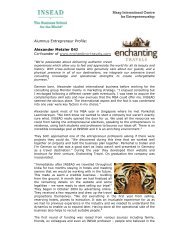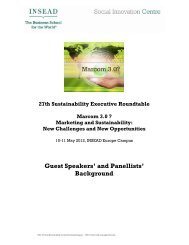RESPONSE - Insead
RESPONSE - Insead
RESPONSE - Insead
Create successful ePaper yourself
Turn your PDF publications into a flip-book with our unique Google optimized e-Paper software.
Recommendations Recommendations for policy and standards<br />
Exhibit 1. Desk Research and Field Visit Protocol<br />
The information gathered during the desk research covers two areas two parts:<br />
1. A description of the company, which is based on publicly available information (i.e. desk<br />
research). In the “Research model”, this part is related to the Environmental and many of the<br />
Corporate level factors eventually explaining the magnitude of cognitive gaps and of motivation to<br />
act responsibly.<br />
2. A description of the company’s CSR work, which is based on data collection at the company (i.e.<br />
the fact finding day). In the “Research model”, this corresponds to the description of the CSR<br />
process, and of the cognitive gaps and of motivations they have. The fact finding day, though,<br />
can provide precious information of explanatory factors as well, such as the founding conditions<br />
and the evolution of the company, its history of environmental and social accidents and the way<br />
they were managed, etc.<br />
1) The company<br />
a. Key Activities:<br />
Products produced and/or services delivered<br />
geographic markets covered<br />
customer segments covered<br />
b. Origins:<br />
Original products/services<br />
Founders’ profile: the entrepreneurial idea, their level of sensitivity for social issues,<br />
their legacy within the company today<br />
Vision and Mission: why was the company created? How was it supposed to be “useful<br />
for the world”?<br />
Brief historical overview of how the company “philosophy” (vision, purpose, mission)<br />
evolved over time<br />
c. Values/principles: (probe with HR and CSR manager)<br />
Current articulation of what they believe are the core principles guiding their activity<br />
Evolution of the espoused values<br />
d. Strategy: (probe with strategy/marketing manager)<br />
What is the current articulation of their competitive strategy? How do they think they<br />
can outcompete rivals?<br />
Do they aim to be the most cost efficient competitors (low price)? Or are they aiming to<br />
distinguish themselves for the quality and uniqueness of their products (high price)?<br />
What do they see as their competitive strengths and weaknesses? What can they do<br />
better than their competitors? What do they do worse than average?<br />
What is their strategymaking process? Is it just a strategic planning exercise for<br />
budget allocation purpose or there are also full discussions of problems, alternative<br />
solutions, implementation priorities?<br />
To what extent and is CSR brought within the picture? Probe for examples to see if<br />
there is a real integration of CSR in the strategy debate.<br />
How did their strategy change over time? Through what process? Is the change<br />
through continuous marginal adjustments or with rare but radical shifts?<br />
Why did the changes occur? What stimulated them? Anything to do with stakeholder<br />
responsibility?<br />
e. Corporate Governance: (CSR Manager, or other senior manager)<br />
Current rules of corporate governance:<br />
<strong>RESPONSE</strong>: understanding and responding to societal demands on corporate responsibility<br />
95



